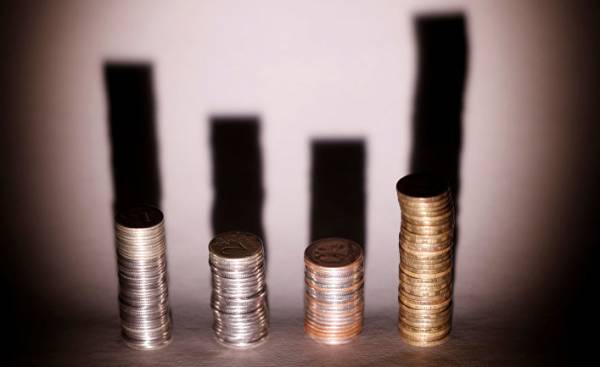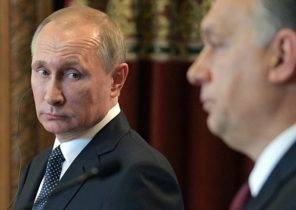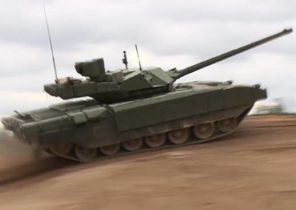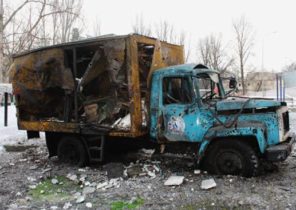
It is expected around the end of August. Maybe in early September — a severe economic crisis. The worse can only be shot in the heart of Moscow. This follows from recent analytical data. To believe they have because the experts themselves have long noticed that in August the Russian economy is facing the most trouble.
Judge for yourself: in August 1998 the Russian government announced a default — inability to pay foreign obligations, two of the recent crisis that shook the Russian Federation — 2008 and 2014 — started in August. In General, the “historical” memory is strong, and every August the Russians anxiously heed not the message of weather forecasters, but the news from the currency market.
Who rummages in the pockets of Russians
August 2017, Russian economy meets in an inconsistent state. On the one hand, the main macroeconomic indicator — gross domestic product — gives reason for optimism: he’s finally started to grow after the failures of the previous two years.
In the first quarter of 2017, GDP grew by 0.5% and the latter 2.7%. And now the Russian government confidently predicts economic growth of 2%, and even more. On the other hand, on real incomes, this growth has not yet been reflected: they all fell the previous months, except in may, it was zero.
Plus inflation, which seems to be dramatically slowed down since the beginning of the year, but summer suddenly began to accelerate again — not without “help” abnormally cold weather influenced the harvest. In short, the Russians have yet to see any improvement in the economic situation do not feel. And this sad fact, alas, is confirmed by numerous surveys.
Against this background, many independent economists warn that there is a growing number of troubling risk factors, indicating the onset of a new crisis, and shoot you in the heart of the Russian economy they can if not directly in August, later this fall.
This saving, inexhaustible oil
The main export product of Russia and the main source of income of the public Treasury — oil — in recent years, is in a state of high volatility. The word what found elegant high intelligence departments! Translated into old Russian is to be understood that oil prices seemed to have gone mad.
In the first half of the summer “black gold” dropping, fell back to $ 45 per barrel (and in fact in January the raw material was trading at 58 dollars per barrel). Then again start to add in the price, up to 52-53 per barrel. What to expect tomorrow? To this question, alas, no definite answer. The situation is extremely unstable — Dodge oil bosses in Moscow.
The fact that the market is almost not affected by the agreement late last year in the format of “OPEC” about the reduction of oil production from 24 States exporters, including Russia and Azerbaijan. Here and there were the scapegoats! They recall, took it upon themselves to remove from the market the 1.8 million barrels per year in order to balance supply and demand.
At first all went well: the oil-producing States which were fighting and arguing over every barrel, has made an unprecedented commitment to implement the agreement and even exceeded its obligations to reduce production by 7%.
Idyll destroyed US, increasing the extraction of heavy shale oil, which is like a bone in the throat of “traditional” raw club. Aggravated the situation and increased production in Libya and Nigeria, who were exempt from participation in the agreement by OPEC due to the previous losses of their commodity sectors as a result of terrorist attacks and natural disasters.
Against this background, the ruble as a litmus test all the twists and turns in the oil market, faded and faded: from April’s 57 rubles, “hardwood” fell by 5% and dropped to 60 rubles per dollar and 70 per Euro. It is noteworthy that Russian government officials wanted, assuring that a strong national currency hinders the recovery of the national economy. What now — to congratulate the government with this accomplished the difficult forecast? Yes, but the trouble is that the drop in oil prices and the inevitable followed by the collapse of the ruble — the main risks of the Russian economy. The main — but not the only.
Capital flees faster DOE
The Russian Central Bank reported net capital outflow from Russia in the first half of 2017 increased by 70% to $ 15 billion, against 8.6 billion a year earlier. At the end of the 2017, the Central Bank forecast net outflow of $ 37 billion. There are more recent statistics: in the first week of July, investors withdrew from funds focused on Russian assets for 29.4 million dollars, a week later, adding to them 25.1 million. It is almost 60 — 70 times higher than the previous week’s figures. Speculators just panic are fleeing Russian assets.
Maybe someone in Baku will calm assurances of the head of the Bank of Russia Elvira Nabiullina that there is nothing wrong with fleeing the country so necessary for its economy there is no investment. According to her, countries with strong export performance and strong current account balance — Germany, Norway, Canada — also happens to be a large outflow of capital. Here the poet would say: “Cool story…”
Independent experts cite a much more mundane causes of panic flight of capital from Russia. It is, he says, was not due to positive developments in the economy, including increasing exports. In their opinion, it’s much worse: investors are convinced that the situation in Russia remains unfavorable to business and as one went into hiding. And what do they do?
Why investors are pulling money — for anybody not a secret: the conditions for entrepreneurial activities in the country leave much to be desired. The reason for that is contradictory, to put it mildly, the judicial system, heavy taxation and a high degree of state involvement in the economy. In getting rid of roubles are not far behind and ordinary citizens: as soon as the currency begins a rapid fall down, the Russians go in exchange for dollars and euros. Meanwhile, in Central Bank statistics such operations are also considered a net outflow of capital abroad.
Under the weight of sanctions
The signal for the flight of capital from Russia became Western challenge — the introduction of a new package of sanctions from the United States. In the Wake of America’s economic sanctions against Russia and the European Union had extended — for another six months. We are talking about the limitations of a number of Russian companies — oil, defense and financial sectors, as well as personal — in the form of financial and visa sanctions on some “capital-intensive” citizens of the Russian Federation.
Moreover, America is escalating its sanctions, threatening to distribute them to any foreign company that is investing in Russia in excess of $5 million Specific sanctions blow aimed against GAZOPROVODOV “Nord stream — 2” and “Turkish stream”, which should deprive Ukraine of the possibility of transit of Russian gas to the Old world.
Hardly a new round of sanctions war so tragic repercussions in Russia, soothe the layman and experts. But the fact that he will delay long-awaited economic recovery is not challenged even the most ardent supporters of Nabiullina. Although the economy of Russia and the US is not much related to each other, but Europe is the main trade partner of the Russian Federation in the structure of Russian exports to EU countries account for about 50%.
So, despite the government’s assurances that the Russian population to the sanctions already used, and sometimes even perceive them as a benefit (say, a direct path to import substitution and development), nothing good to the country, they are not. In particular, a negative impact, as we have seen above, at the rate of the ruble against the dollar and the Euro.
And on the table that the ball rolled
Before leaving on summer vacations, the Federation Council has approved amendments to the budget in 2017, previously adopted by the state Duma. They assume reduction of the deficit of the Russian budget in 2017 at 1.9 trillion instead of the previously estimated 2.7 trillion rubles. Seemingly good news, but the deficit remains a deficit, except that it was not six times less than the budget, and in seven.
As a result, the government in the execution of large-scale social obligations we never have enough money, so even a reduced deficit will have to be met either from reserves that are already on the wane, either through Federal loans or through issue of money and running the printing press. All three scenarios for the ruble as the oxygen pillow for the dying.
And the main thing — throughout the last year and a continued collapse of consumption among the General population, as indicated by the commodity and money circulation retail stores: most of them last year was the lowest revenue growth over the last decade.
The decline in consumption is a natural consequence of the continuing decline in real incomes. No matter how assured us authorities that the economy rises from its knees, for ordinary citizens it is the growth of income is the main indicator of recovery. But it is still there. For the first five months of this year real incomes fell by 1.8%, just as they continue to roll down for the fourth consecutive year. From October 2014 the Russians are considerably poorer: their wallets lost more than 15%, returning to levels of the crisis in 2009 and the total number of the officially recognized poor amounted to 22 million people. Save the situation could large-scale indexation of wages and pensions, but in Moscow no one dares — budget and already bursting at the seams.
“Homework” for Azerbaijan
The Russian authorities, broadcasting from high tribunes about the advent of the economic boom, of course, want to believe, but the trouble is that the rise of this narrow-minded level is not felt. On the contrary, there is a sense of fall is rapid and irreversible, like running downhill. The unpredictable fluctuations of oil, geopolitical games and domestic issues do not allow to breathe to the Russian economy.
In the negative scenario painted by the experts, there is nothing fantastic: the fall of a barrel with the subsequent devaluation, massive capital flight, depletion of reserves, the appearance of holes in the budget and total impoverishment of the population occurred in Russia repeatedly, including twice in the last 10 years. And today it appears again sufficient prerequisites for the new impact of the crisis — if not summer, then fall for sure.
Well, our readers from Azerbaijan we offer to do separate “homework” and evaluate the risks in the last month of summer faced Russia that are relevant to their economy and threaten her in the foreseeable future, the same evils that Russian?







